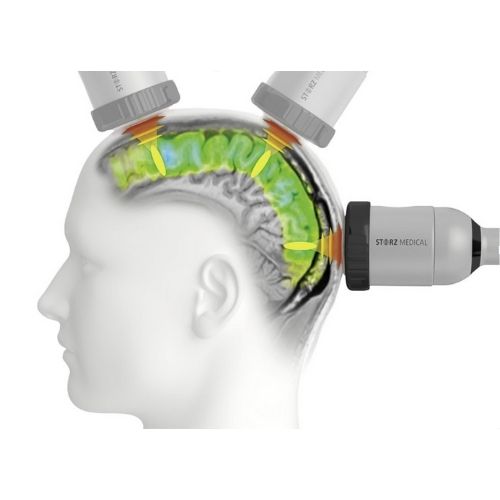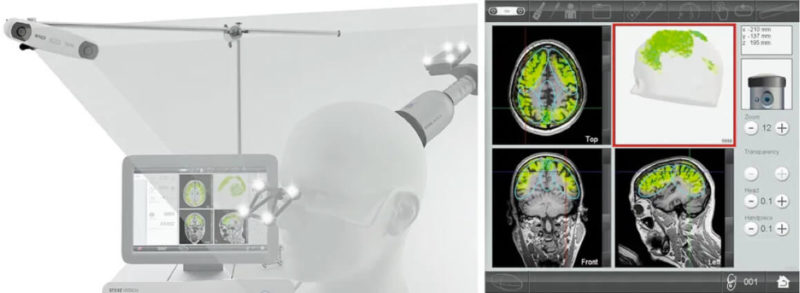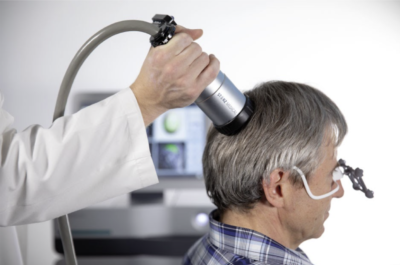A diagnosis of Alzheimer’s dementia can be difficult to receive. The neurodegenerative disorder affects one in every six people over the age of 80, and is characterised by memory loss, confusion, difficulty navigating, and other behavioural and functional symptoms.
While the origin of Alzheimer’s is still unknown, we do know that the symptoms are a result of programmed neuronal cell death caused by amyloid beta plaques and neurofibrillary tangles forming in the brain.
These misformed protein structures interrupt the communication between neurons, which results in cell death. As these neurons die, it causes disruptions in the supply of blood to regions of the brain, starving them of oxygen, glucose and nutrients.
Studies have shown Cerebral Blood Flow (CBF) to be on average 20% lower in people with Alzheimer’s compared to those without a neurodegenerative disease.
How is Alzheimer’s currently treated?
To this day no cure for Alzheimer’s has been found despite being one of the most heavily researched disorders in the world. Some promising new treatments have been discovered in recent years however they are either still being tested in clinical trials or are inaccessible to the majority of the population.
Most current treatments can be sorted into two categories, those involving medication, and those involving cognitive exercises.
Medications such as acetylcholinesterase inhibitors and memantine seek to alter neural chemistry in order to give the brain a better fighting chance at holding off degeneration for longer.
Cognitive exercises such as Cognitive Stimulation Therapy act as training for the brain, taking part in problem solving activities, performing everyday tasks, and recalling life events.
Although considerable benefit can be gained from these treatments, until now, treatment specialists have lacked a treatment which directly targets the root causes of Alzheimer’s without the use of medication.
Transcranial Pulse Stimulation (TPS®)
TPS® is a new Alzheimer’s treatment which involves passing short acoustic pulses with an ultrasound frequency range through the patient’s head to stimulate deep cerebral regions of the brain with millimeter accuracy.
These acoustic waves stimulate the production of growth factors such as BDNF. This not only improves cerebral blood flow, but also promotes the formation of new blood vessels (angiogenesis) and nerve regeneration. In addition it causes the release of nitric oxide which leads to direct vasodilation and improved blood circulation.
This drug-free treatment has been shown to enhance and maintain cognitive ability in Alzheimer’s patients, and will not interfere with any medications the patient is taking. The treatment is completely non-invasive, and uses high frequency ultrasound waves to stimulate neural growth factors.
Just six 30 minute treatments over 2 weeks has been shown improve some major symptoms of Alzheimer’s and mild to moderate dementia by 10 points on the CERAD scale, with stable effects three months after treatment, and longer with “booster” sessions.
“For the first time in the world, Transcranial Pulse Stimulation enables us to penetrate into all areas of the brain by means of an ultrasound pulse delivered directly to the skull in a non-invasive, painless procedure, during which the patient is fully conscious, and to specifically target particular areas of the brain and stimulate them”
– Roland Beisteiner, MD
What are the Advantages of Transcranial Pulse Stimulation?
- Painless procedure.
- No side effects.
- No medication needed.
- No need to shave the hair.
- Personalised treatments based on MRI data.
- Remain in a comfortable seated position during treatment.
- Treatment sessions over just two weeks.

Is Transcranial Pulse Stimulation Safe?
Thanks to the short duration of the acoustic pulses, heating of the tissue is prevented, which can be an issue in similar treatments such as Transcranial Electrical Stimulation (TES).
TPS® treatment is performed directly through the skull, non-invasively. The patient remains awake during the treatment in a comfortable seated position.
More than 1800 treatments have been performed using the Neurolith™ TPS® system since it’s first use for Alzheimer’s in 2018, with no reported side effects or down-time.
How Can I Provide Transcranial Pulse Stimulation Treatments in my Clinic?
TPS treatments can be carried out using a Neurolith TPS® device. Venn Healthcare are UK suppliers for Neurolith TPS®, which is manufactured by Storz Medical.
Neurolith® received medical CE in December 2018.
The System at a Glance
- BodyTrack® software
- 3D Camera with patient and handpiece position detection
- Calibration probe & tracking glasses with markers
- TPS handpiece with markers – ergonomic design to minimize hand fatigue
More information can be found on the device page for Neurolith Transcranial Pulse Stimulation.

Can I Access the Treatment Myself?
If you are interested as to whether you or a loved one may be eligible for TPS®, Alzheimer’s Clinics is the first UK clinic to offer this new treatment. See their website for further info, testimonials, and eligibility criteria.





